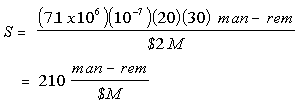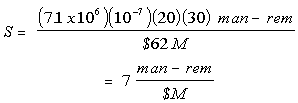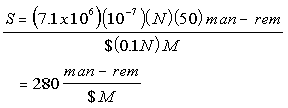Resolution of Generic Safety Issues: Issue 12: BWR Jet Pump Integrity (Rev. 1) ( NUREG-0933, Main Report with Supplements 1–35 )
DESCRIPTION
Historical Background
A memorandum22 from AEOD to NRR dated May 23, 1980 drew attention to the generic issue of BWR jet pump integrity. The concern that motivated the AEOD memo was a February 1980 jet pump failure at Dresden Unit 3, together with previous jet pump integrity-related problems at Dresden and Quad Cities. The Dresden failure was caused by progressive stress corrosion cracking of the pump's hold-down beam. The unit was shut down and the failed beam was replaced, along with six other beams for which indications of cracking were found upon ultrasonic inspection. Information concerning an earlier (May 1979) jet pump beam failure at a foreign GE BWR came to NRC's attention after the Dresden 3 failure.
Safety Significance
In GE BWRs (except in the earliest plants), water recirculation within the reactor vessel during normal power operation is accomplished by a ring of 16 to 24 water-jet pumps. Failure of a pump is of concern not only because of each pump's contribution to proper distribution of water flow within the vessel during normal operation but also because the pumps are designed to assure maintenance of water level well up in the core region in the event of a LOCA. The jet pump inlet is located about two-thirds of the way up the core height. If pump failure should lead to damage further down in the pump's diffuser, a lower-level outlet path could be opened and could prevent reflooding of the core following a break in a recirculation line. A degraded jet pump could be more vulnerable to damage from stresses due to water hammer or LOCA loads, should they occur. Also, jet-pump damage could permit increased rate of coolant loss in a LOCA since, in a LOCA, the jet pump's nozzle area is the limiting area for flow.
Possible Solutions
The AEOD memo22 includes recommendations for generic corrective and evaluative actions. They include: (1) scheduled replacement of all hold-down beams with structures of improved design; (2) evaluation of the potential for water-hammer-type loads, the magnitude of such potential loads, and their impact on jet-pump integrity; and (3) evaluation of the potential for damaging vibration and fatigue failure during initial LPCI injection and subsequent long-term cooling modes. Further discussion of the AEOD recommendations appears in a responding memo51 from NRR, dated July 11, 1980, in which phased replacement of the hold-down beams was discussed.
Currently, operating plants are monitoring jet pump performance in accordance with an IE Bulletin No. 80-0752 issued in 1980 and information supplied in GE SIL No. 330.53 GE has meanwhile developed and prototype tested improved hold-down beam bars. GE is now prepared to produce and sell the improved beams to replace the existing ones. GE's work is being reviewed by OIE and Materials Engineering Branch (MTEB) of NRR. Definitive plans for any further steps for operating plants and for plants well along in construction remain to be formulated. Possible technical specification changes to include early indication of jet pump degradation remain to be addressed.
Possible means to gain early indication of hold-down beam damage include (a) monitoring the ratio of jet-pump driven flow to driving flow and (b) ultrasonic inspection of the beams for incipient cracks (at refueling -- typically at about 18-month intervals). The efficacy of jet-pump performance monitoring depends on empirical and analytical indications that the breaking of a hold-down beam is preceded by a period during which a severely cracked beam allows some displacement of the jet nozzle thereby impairing the jet pump's performance. According to a GE estimate, this warning time would be about 7 to 13 days for the BWR/3 design; however, for BWR/4 plants, only about 1/3 to 2 days are expected to be available and the indication would be less clearly discernible. The value of ultrasonic inspection at refueling is based on the slow, progressive nature of the stress-corrosion cracking. GE estimates that small cracks can begin to appear several years after start of operation (about 4½ years for the BWR/3 plants and over 10 years for the newer BWR/4 plants), and that it takes about 1½ additional years for the cracks to propagate to failure.
PRIORITY DETERMINATION
Frequency Estimate
In some 100 RY (about 2000 pump-years) of BWR operation in the U.S. to date, there has been one hold-down beam failure (at Dresden 3). In the 14 months after the Dresden 3 failure, 19 additional beams were replaced because of crack indications in ultrasonic inspection. Eighteen of these indications occurred in 6 of the 8 BWR/3 reactors inspected, and one in one of the 12 BWR/4 reactors inspected. (Partial information on overseas reactors indicates one failure in one BWR/3 as well as some cracked beams detected in inspection.) Because of the nature of the problem -- progressive stress-corrosion cracking -- an increase in the rate of incipient failures with the hold-down structures now in the plants can be anticipated as their exposure time increases, unless corrective action is taken. Because cracks are detectable and plants have been alerted to the problem, there is reasonable prospect of corrective action before gross failure of the hold-down beams. However, after the one-time requirement imposed by IE Bulletin No. 80-07,52 further periodic ultrasonic inspection of beams is not now required and the presence of at least one beam with some degree of cracking in a BWR/3 reactor at any time is very likely (probability = 1). The newer BWR/4 reactors appear to have a lower probability now (perhaps 0.1) but that probability may well increase towards the BWR/3 level over the next several years as the plants accumulate operating time. Accordingly, a probability of 1 for the presence of a crack in at least one beam appears to be a reasonable basis for a bounding calculation.
Jet-pump hold-down failure could lead to core damage by two types of mechanisms: LOCA aggravation and flow maldistribution. Frequency estimates for each of these mechanisms are as follows:
LOCA aggravation: A recirculation line break in addition to jet-pump damage could prevent core reflooding. The two required events may not be independent; stresses resulting from a line-break LOCA could damage a weakened jet pump. However, for major core damage to occur, the jet-pump damage must be severe enough to permit a coolant loss rate greater than the ECCS can replace, by opening a large flow area at a level well down in the core. For lack of better information, a conditional probability of 1 is conservatively assigned to LOCA aggravation (by a large enough hole being opened), given recirculation line break and given jet-pump hold-down breakage. Again, it is conservatively assumed that without periodic ultrasonic inspection and cautionary replacement of beams with incipient cracks, there is likely to be present a crack large enough to result in beam failure during a LOCA. As discussed, the probability of a cracked beam is 1. Thus, the contingent probability of LOCA aggravation by jet-pump hold-down beam failure, given recirculation-line break, is (1)(1) or 1.
Based on WASH-140016 (Sec. III-6.4) and NUREG/CR-165954 (Vol. 4, pp 4-22), the estimated frequency of a recirculation line break is 10-4/RY.
For core damage to occur, the core spray must also fail. If, on the basis of WASH-140016 (p. II-5), one takes the probability of such failure as 10-3 (assuming core spray failure to be independent of jet-pump hold-down and diffuser failures), the estimated frequency (F) of core damage due to LOCA aggravation by jet-pump beam failure is given by F = (1.0)(10-4)(10-3)/RY or 10-7/RY.
A flow monitoring and ultrasonic inspection program should provide a substantial reduction in this probability because, as discussed above, crack growth is slow and a hold-down beam weakened by a substantial crack is believed necessary for LOCA aggravation. At least a ten-fold improvement should be typically obtainable.
Flow Maldistribution: Loose broken-off parts could obstruct flow in part of the core substantially aggravating maldistribution of flow due to loss of a jet pump. However, detection and correction before substantial core damage could occur can be relied on with a high probability. It is believed that the overall risk from the BWR jet-pump problem can be estimated to a fair approximation in terms of the LOCA aggravation mechanism alone.
Consequence Estimate
The estimated consequences are the same as those for a WASH-140016 BWR-2 release category. In this accident category, decay-heat-removal systems are assumed to fail (i.e., LPCI and LPCS). As a result, containment fails by overpressure, core melting occurs, and release of radioactive materials takes place over about 3 hours without significant retention of fission products. The choice of the BWR-2 category reflects prompt failure of decay heat removal after a transient occurs while the reactor is at power. Consequences for a BWR-2 release category are expressed in man-rem. The total whole-body man-rem dose is obtained by using the CRAC Code for the particular release category. The calculations assume a uniform population density of 340 people per square mile (which is average for U.S. domestic cities) and a typical (midwest plain) meteorology. For a BWR-2 accident, consequences are 7.1 x 106 man-rem.
Cost Estimate
Industry Cost: Based on estimates informally received from GE, 20 operating plants would each require the following typical costs for change-over of all hold-down beams:
| Hardware and labor to install | $ 100,000 | |
| Plant outage (cost of replacement power for 10 days of additional outage time at refueling) | $3,000,000 | |
| Total cost per typical BWR Plant | = | $3,100,000 |
For each operating reactor, the costs of complete beam change-out would be reduced, to an extent that would be plant specific, if those costs were adjusted for the averted replacement cost of failed or damaged beams. For plants of the older BWR/3 type, it is quite likely that most of the original beams would eventually show damage and require replacement. For BWR/4 reactors, corrective replacement of damaged beams may be lower in proportion and mostly further in the future. Damaged beams must be replaced for operational as well as safety reasons.
No significant industry costs are expected to be associated with the use of improved hold-down beams in future plants. For plants nearing completion in which hold-down beams would be replaced, a cost of $100,000 per plant may be assumed.
The cost of ultrasonic inspection is estimated to be $10,000/reactor for a 1.5-year inspection interval, on the assumption that it can be accommodated during a refueling outage without prolonging the outage. The cost of flow monitoring is estimated to be small in comparison. Thus, monitoring costs may be taken to be about $0.01M/RY. (This includes $0.007M/RY for inspections plus $0.003M/RY for flow monitoring.) The equivalent one-time cost at "present worth" for a remaining reactor life of 20 to 30 years may be taken as approximately $0.1M/reactor.
Replacement of suspect beams during refueling is estimated to cost about $150,000/beam, on the assumption of a 1/2-day lengthening of a refueling shutdown per beam replaced. To replace a beam in a shutdown forced by beam breakage during operation or by flow-monitoring evidence of hold-down beam separation would cost typically some $2.1M for replacement power (at $0.3M/day) during a 1-week plant outage. This makes cautionary replacement of beams with ultrasonic indication of incipient cracking cost-effective, since the likelihood of failure before the next refueling would have a probability higher than 0.07 (i.e., higher than $0.15M/$2.1M).
NRC Cost: NRC costs are negligible in comparison with industry costs and include:
(1) Monitoring and ultrasonic inspection costs for 20 operating plants are $(20)(0.1)M or $2M.
(2) Beam replacement costs for 20 operating plants are $(20)(3.1)M or $62M.
(3) Beam replacement costs for plants nearly completed are $0.1M/reactor.
Value/Impact Assessment
The risk reduction per reactor based on a 30-year operating life is (7.1 x 106) (10-7)(30) man-rem/reactor or 21 man-rem/reactor. The value/impact scores are as follows:
(1) For operating plants, based on imposition of jet-pump flow ratio monitoring during operation and ultrasonic inspection at each refueling (before adjustment of the score for the cost-effectiveness of the monitoring program on the basis of plant economics):

If this score were adjusted for the previously noted cost advantage of cautionary over emergency beam replacement, the score would become negative, indicating that the safer course is also the more economical in this case.
(2) For operating plants, based on complete replacement of existing beams with beams of improved design, before adjustment for averted cost of replacing cracked beams:

This value/impact score would become more favorable if it were adjusted for the averted cost of replacing cracked beams. The magnitude of this effect can vary widely (from insignificant to possibly dominant) according to plant specifics.
(3) For nearly completed plants, the value/impact score is as follows:

This score reflects an assumption that the beam changeover would not be on the critical path in the schedule of remaining activities leading to initial power operation. Therefore, only hardware and labor costs are included. Adjustment for the averted cost of replacing cracked beams could well make this score negative, indicating that changeover of the beams would be beneficial from the standpoint of plant economics as well as safety.
(4) For future plants, the added cost for beams of improved design is negligible. Thus, the value/impact score obtained for nearly-completed plants makes the installation of beams of improved design a favorable option for future plants.
Uncertainties
In addition to the usual wide uncertainties about estimates of accident frequencies and consequences, this issue is highly sensitive to uncertainties in estimates of two cost elements:
(1) A high frequency of corrective or cautionary replacement of failed or damaged beams could wipe out the costs saved by not making a complete changeover to improve beams.
(2) The cost of replacement power is the dominant element in beam replacement costs on operating plants. These can vary widely among plants. Also, if beam replacement can be scheduled at a period of low power demand, replacement power costs could greatly decrease. The priority score could thus become selectively much more favorable for some specific plants at some specific changeout times.
Other Considerations
(1) The refloodable core, which depends on jet-pump integrity, is an important layer of protection against core-melt as part of the defense-in-depth concept embodied in BWR designs.
(2) This issue has attained a proposed technical resolution.
(3) As noted in the preceding discussion, the probability of beam cracking can vary widely according to plant specifics, notably design and age. The benefit-cost relations in possible beam changeout are highly variable according to case specifics.
(4) The estimated economic impact of implementing an available resolution that involves use of improved-design beams increases sharply as one proceeds from a pre-construction stage to construction and to operation.
(5) The available monitoring program is cost-effective.
CONCLUSION
After considering the value/impact scores calculated for the various categories of new and existing plants, together with the other considerations stated above, it was recommended that the further steps of establishing regulatory requirements and implementation plans appropriate to the various specific situations be pursued. As a result, this issue was given a medium priority ranking.
In response to IE Bulletin No. 80-07,52 7 plants found no evidence of cracking or unusual wear; however, 3 of these plants replaced their hold-down beams with new improved-design beams. Thirteen plants found damaged beams; 11 of these replaced their beams with either new beams of the same design, but with reduced preload, or with beams of a new design, with an improved heat treatment. The other 2 plants replaced all beams with beams of the new design.
Those plants that did not replace all hold-down beams with the new design beams have continued to do daily flow rate surveillance, as required by IE Bulletin No. 80-07,52 and to voluntarily perform ISI of the beams at refueling outages. Plants under licensing review have either changed the hold-down beams with those of the improved design or have committed to a surveillance and ISI program.
The staff reviewed the voluntary actions taken by OLs and CPs and concluded that the issue of possible failure of BWR jet pump hold-down beams has been adequately addressed.666 Thus, this issue was RESOLVED and no new requirements were established.
REFERENCES
|


